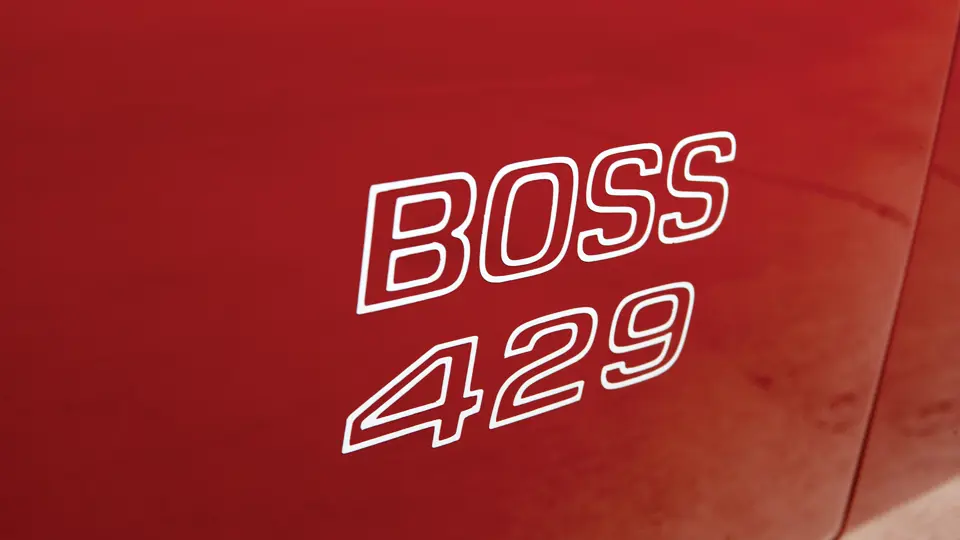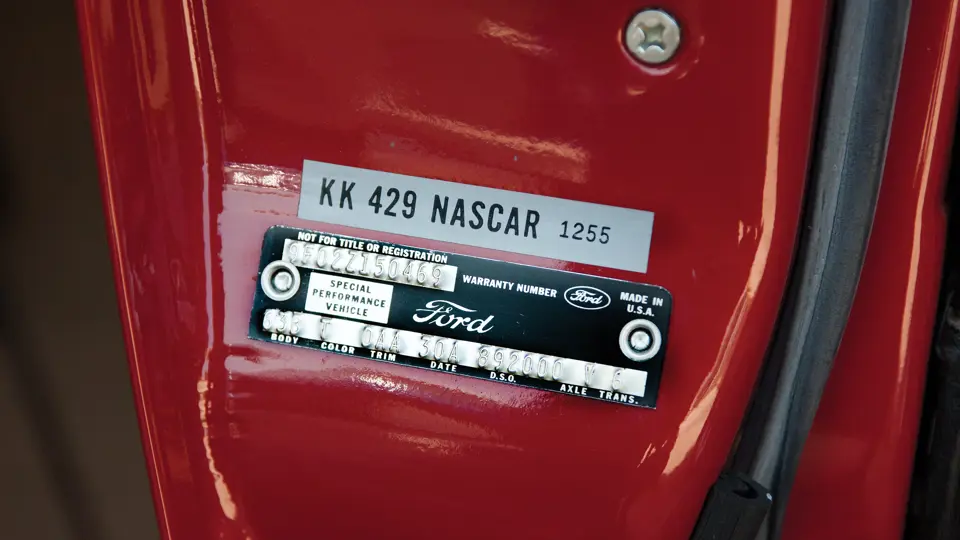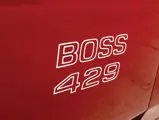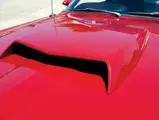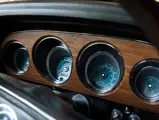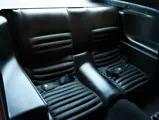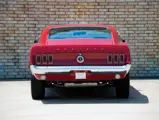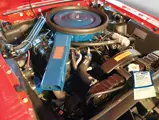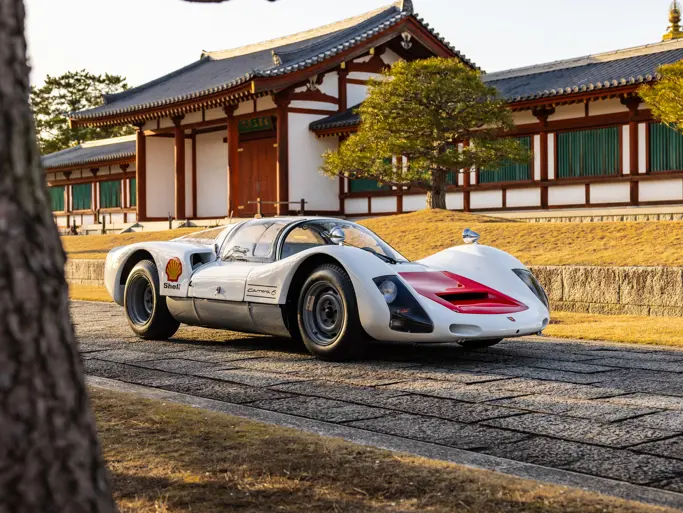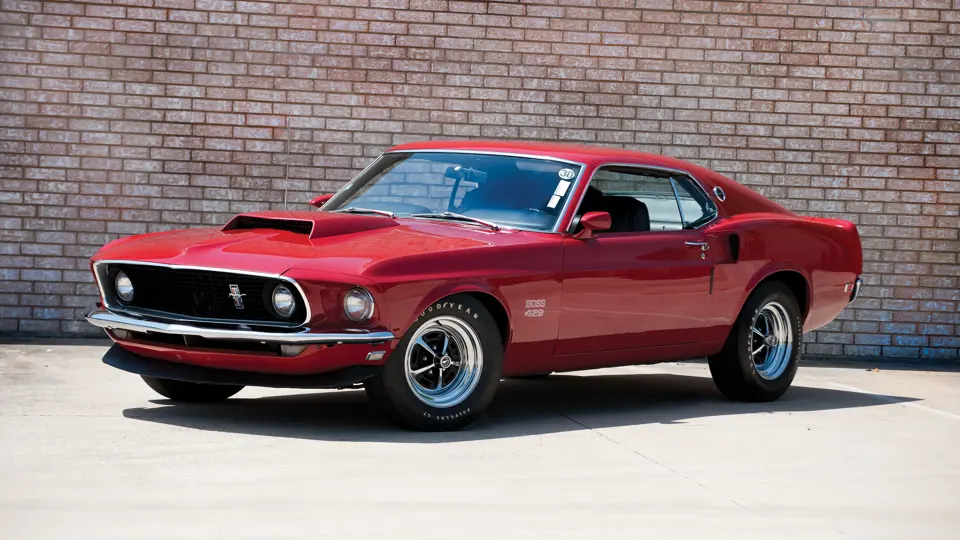
1969 Ford Mustang Boss 429
{{lr.item.text}}
$275,000 USD | Sold
{{bidding.lot.reserveStatusFormatted}}
- One of the first 50 “priority built” Boss 429s
- Hand-assembled with numerous unique KKX and XE parts
- Incredibly detailed restoration overseen by Boss 429 expert Ed Meyer
- Original documentation
- One of the very best of the best
375 bhp, 429 cu. in. overhead-valve V-8 engine with Holley four-barrel carburetor, four-speed close-ratio manual transmission, independent front suspension via coil springs and upper and lower wishbones, live rear axle with semi-elliptic leaf springs, and front disc and rear drum brakes. Wheelbase: 108 in.
During the mid-1960s, the non-competition pact adopted by the Big Three nearly a decade earlier had fallen to shreds, with increasingly open factory-based support provided to supposedly independent racers. Ford, in particular, faced stiff competition from Chrysler in NASCAR competition. The Blue Oval camp required a new engine, but NASCAR rules demanded that at least 500 cars be equipped with the engine and be made available to the public.
Ford developed a new 429-cubic inch V-8 with all-new, free-flowing cylinder heads, an aluminum high-rise intake manifold, a 735 CFM Holley carburetor, 11:1 compression, header-style exhaust manifolds, and a beefy four-bolt main block, conservatively rated at 375 horsepower.
When dropped into the Mustang, at the direction of “Bunkie” Knudsen, it created the Boss 429, a pony car with abundant muscle. To handle the power, the stout “Toploader” four-speed manual transmission and a 3.91:1 Traction-Lok rear axle were mandatory options. Other features included an engine oil cooler, a trunk-mounted battery with a special vent cap system, a competition suspension with front and rear anti-roll bars, power front disc brakes, and fat F60x15 tires. The production process required numerous modifications to accommodate the new engine, including cutting and relocating the shock towers. To alleviate the in-house production burden, Ford had the cars converted at Kar Kraft, of Brighton, Michigan.
At just under $5,000, the Boss 429 was the priciest non-Shelby Mustang to date, and it was available in very limited numbers, with 859 produced for the 1969 model year to meet demand; it was awarded largely by sealed bids to voracious buyers. Ford reportedly lost $1,800 on every one built. Of these, the first cars were so-called “priority build” cars, invoiced through Shelby Automotive—yes, that Shelby—under the early DSO 892000, and they were delivered to Kar Kraft equipped with 428 “Super Cobra Jet” V-8 engines, drivetrains, and performance suspension. Once in Brighton, the cars were changed over to Boss 429 specification, utilizing, in the earliest cars, the 820-S NASCAR-specification version of the 429 V-8, an engine fully unique to the Boss 429. The same as used in Ford’s stock cars, this mighty mill began with a high-nickel standard four-bolt block, dressed with Ford heavy-duty one-half-inch bolt “S” rods, forged “S” pistons, a steel crank, screw-in freeze plugs, aluminum hemispherical heads (the first aluminum heads on a Ford), “Ram Air” induction, forged rockers, a staggered valve train, aluminum high-rise Holley carburetor intake, and magnesium valve covers.
Other equipment on this car included power steering, a unique KKX beefed-up competition suspension, staggered rear shocks under a unique rear sway bar (an American car first), and a four-speed close-ratio transmission with a 3.91:1 nodular Track-Lok rear axle.
These were, essentially, NASCAR cars in street-legal trim, which was exactly the point. The Hemi ‘Cuda was just an engine that was dropped into a car, while the Boss 429 was custom-built and unique. The cars were delivered to the dealers that Ford considered most important for their “Total Performance” image, those that did a regular business with drag racers who knew good equipment when they saw it. The Blue Oval brass wanted them to see it on the new Boss 429.
This particular car was one of the very earliest Candy Apple Red Boss 429s built, and it was restored to what can only be described as the very highest of high-point judging standards by Meyer’s Cars. The restoration work was overseen by Ed Meyer, who is the head judge of the Shelby American Automobile Club, with over 30 years of experience with these cars. The car is accompanied by a handwritten list, compiled by Mr. Meyer during the restoration to aid in future judging sessions, of the 20 unique features found on this and the other early Boss 429s. Other documentation includes the glove box warranty papers, a build sheet, and other paperwork from the original dealer. Mr. Meyer has graciously included with this car a signed copy of his book on the Boss 429, which includes detailed information on the specifications of the early build cars, and it further notes that this example is featured in the Boss 429 Registry, which also accompanies it.
Meyer began with what was an incredibly solid and undamaged original car, and which, indeed, still has all of its original, correct sheet metal with all body-stamped VIN numbers present, including the original Special Performance Vehicle tag and Kar Kraft sticker, a “buck tag,” Carlite glass, and correctly labeled original components, down to the tiniest nut and bolt.
Even the suspension and exhaust are well-preserved original components, and all of the markings that a Boss 429 guru would look for—date codes, color codes, and the chalk and grease pencil marks—are exactly where one would expect to find them. The level of intensive detail that was poured into this car is absolutely amazing, befitting of what was a hand-built muscle car, and it remains ready to score at the highest levels in national competition, as its excellence is well-known among the Boss 429 cognoscenti.
In 1969, Ford had this car hand-built to impress its most important “speed freak” customers. Today, it will no doubt satisfy modern collectors the same way. Among surviving Boss 429s, there are, quite simply, very few that can compare.





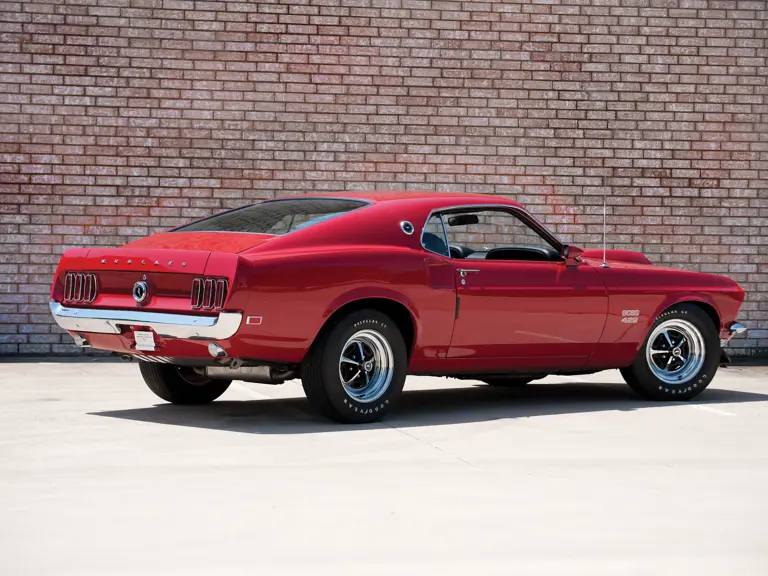

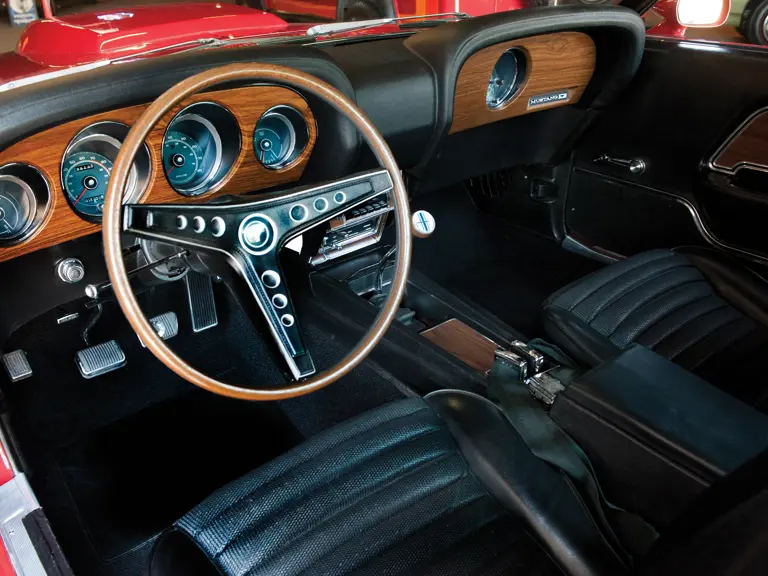
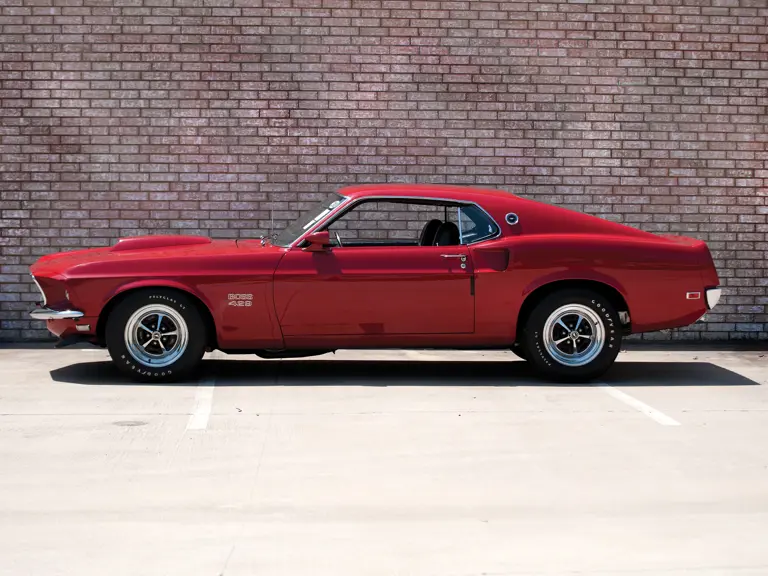



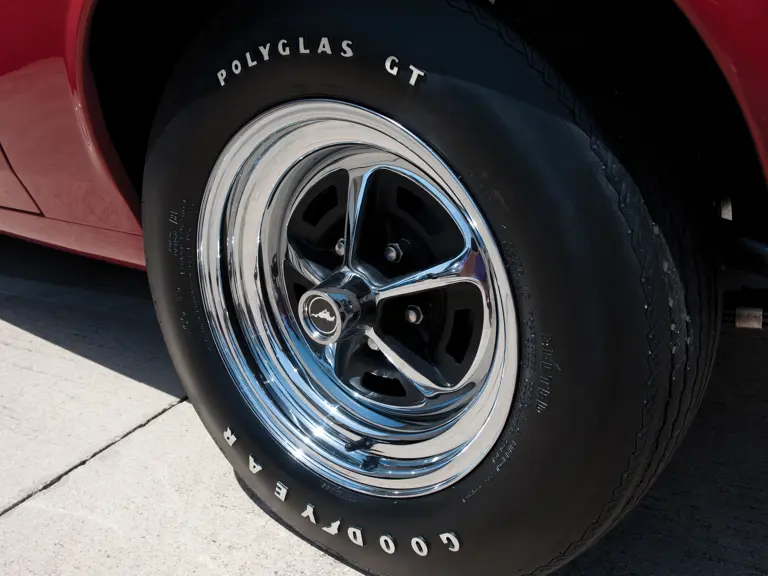
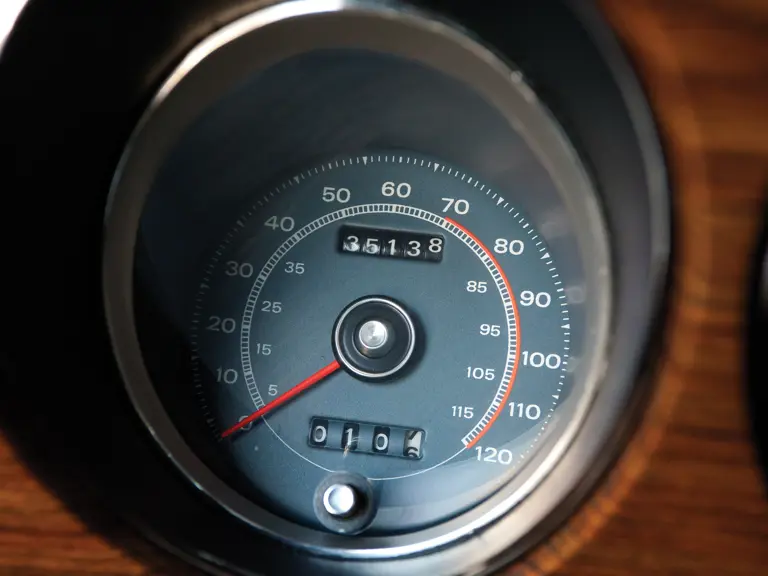
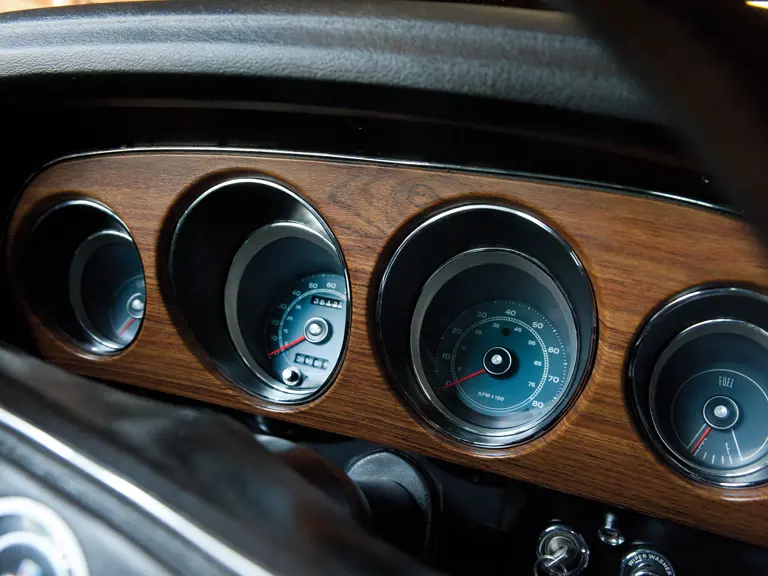
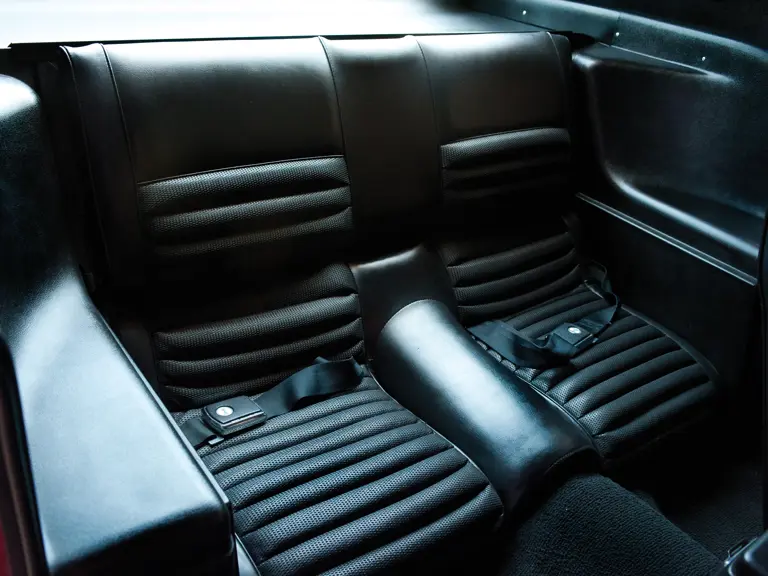

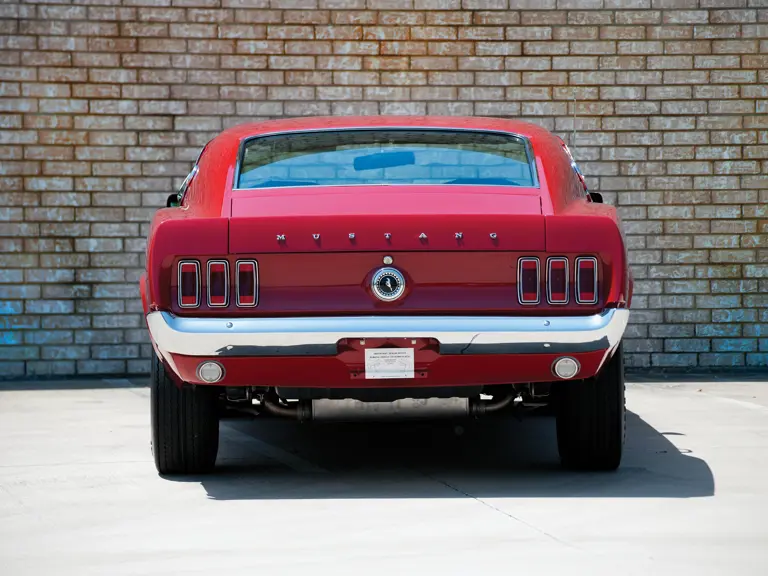
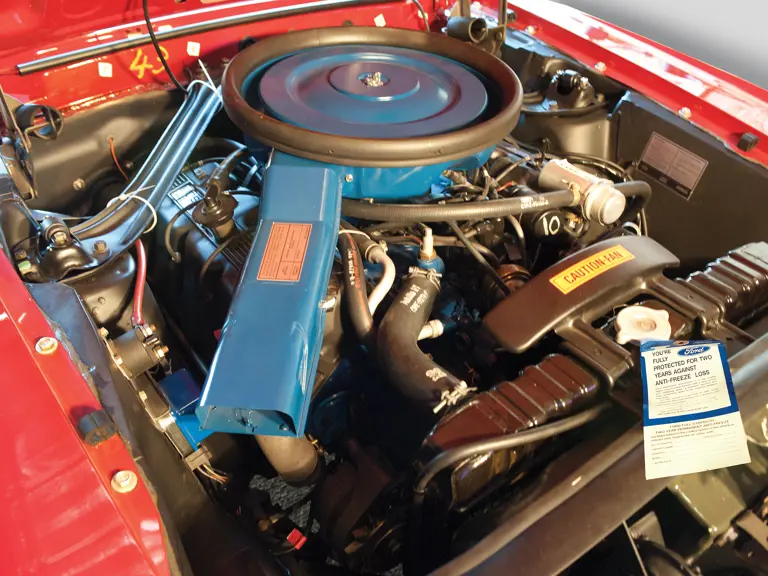
 | Monterey, California
| Monterey, California

